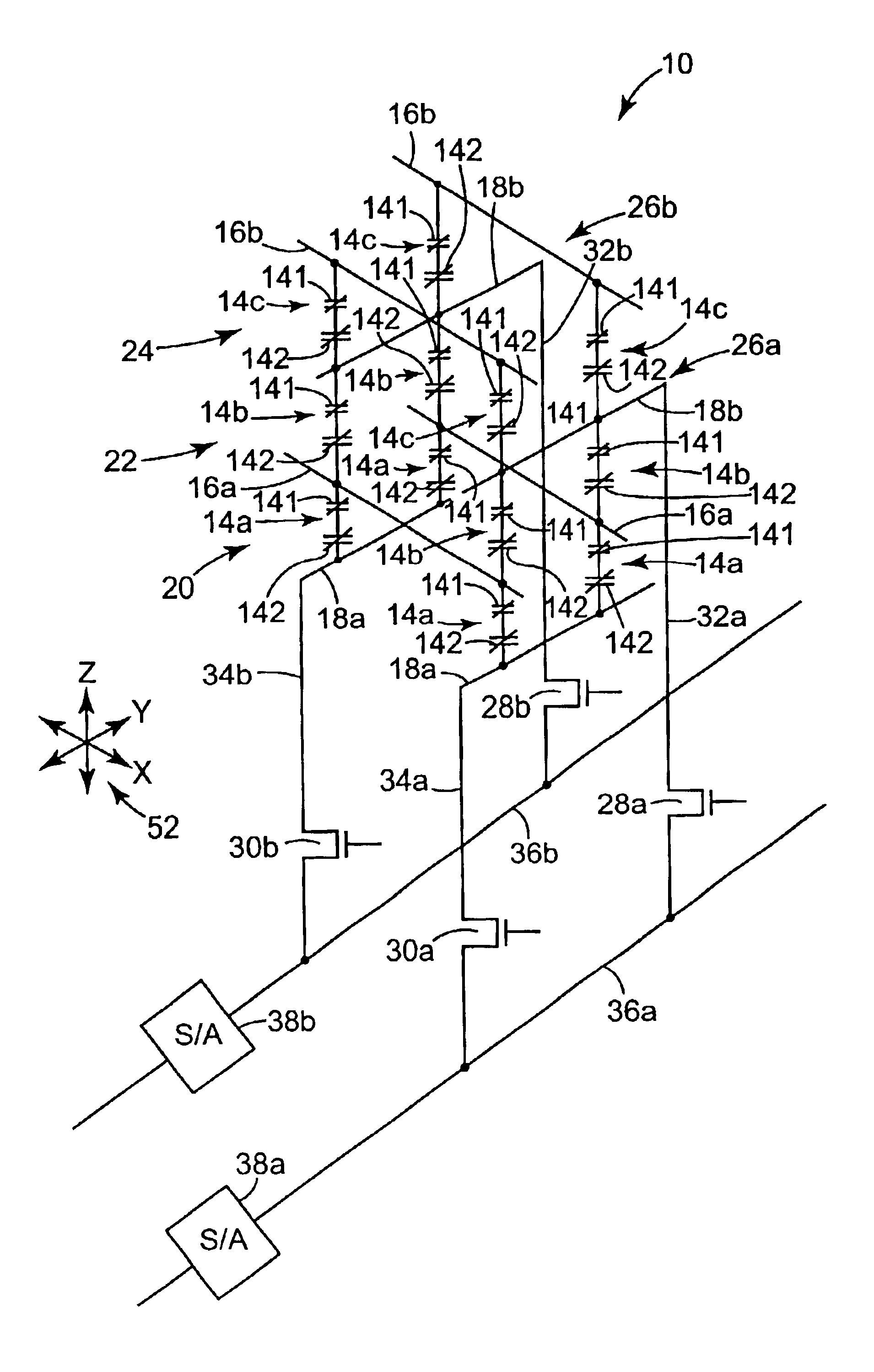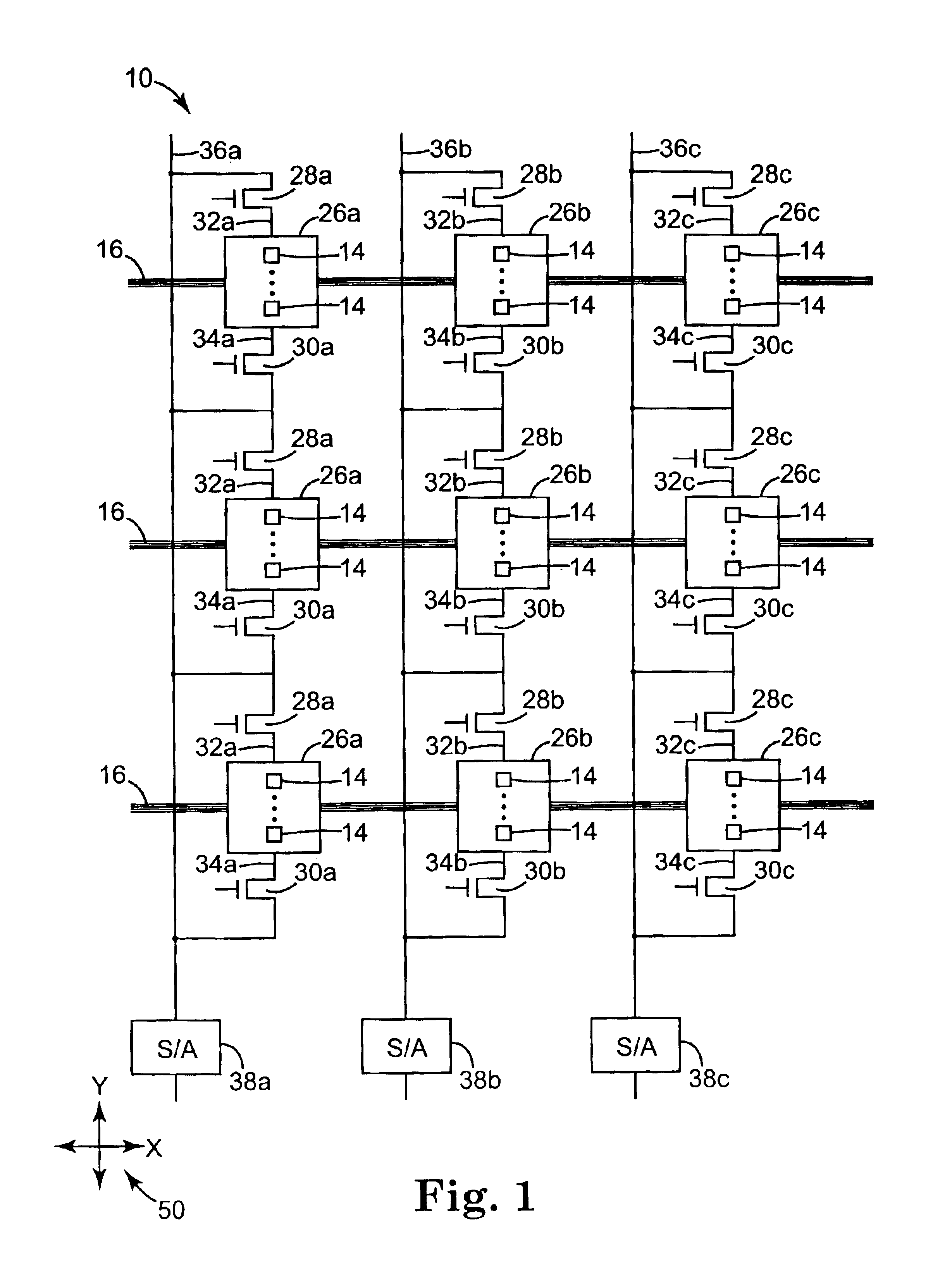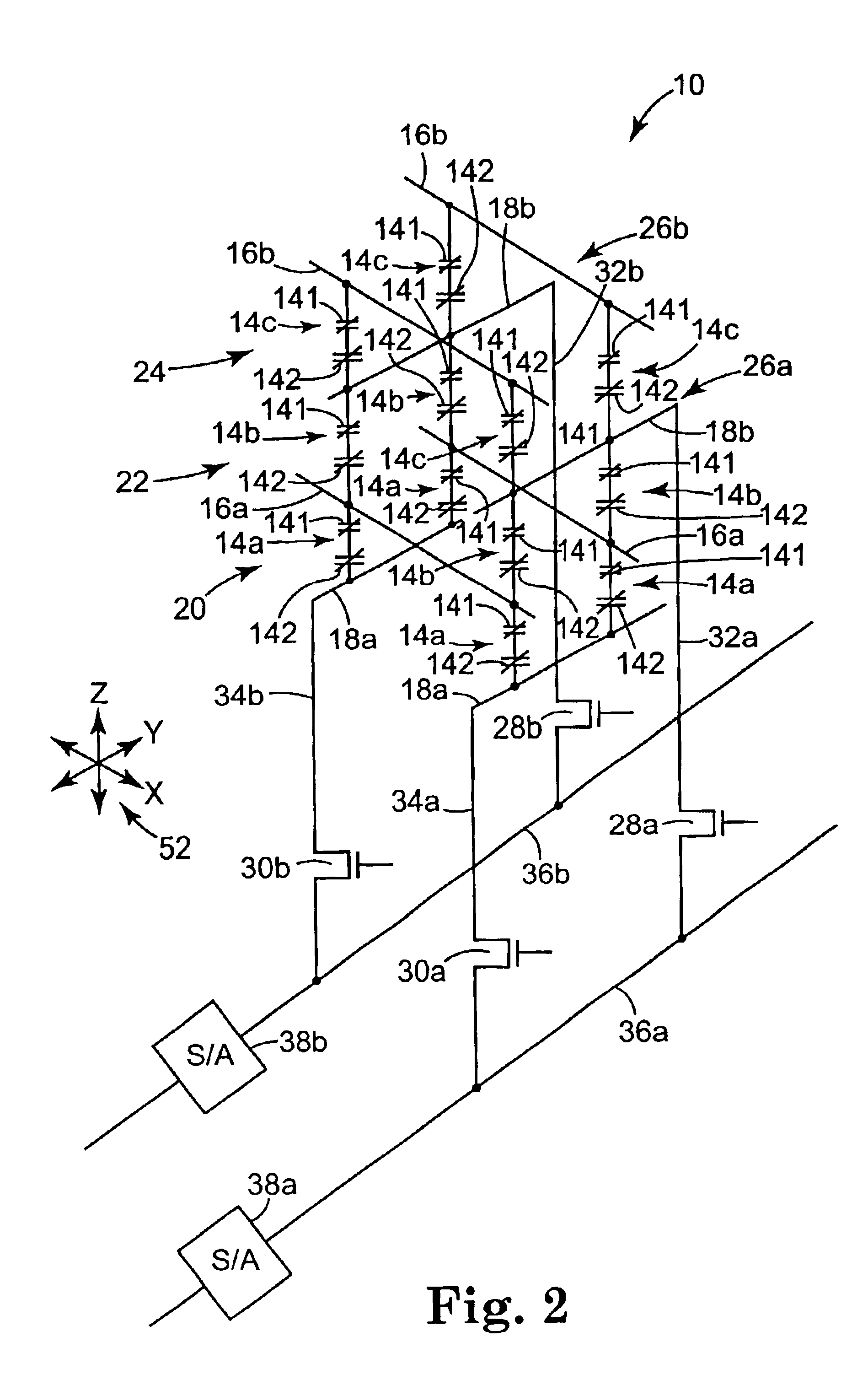Memory storage device with segmented column line array
a memory storage device and column line array technology, applied in semiconductor devices, digital storage, instruments, etc., can solve the problems of more difficult to detect the difference between non-programmed and programmed configurations, and difficult to accurately read memory
- Summary
- Abstract
- Description
- Claims
- Application Information
AI Technical Summary
Problems solved by technology
Method used
Image
Examples
first embodiment
[0034]FIGS. 4A and 4B are cross section views illustrating a memory cell 14 used in a memory storage device according to the present invention. FIGS. 4A and 4B illustrate that each memory cell 14 is intersected and electrically coupled to a row line 16 and a column line segment 18. Memory cells in various embodiments are electrically coupled at a top side to column line segment 18 and at a bottom side to row lines 16, or at a bottom side to column line segments 18 and at a top side to row lines 16.
[0035]FIG. 4A illustrates a tunnel junction storage element 141 electrically coupled via electrode 41 to a tunnel junction control element 142. Control element 142 is electrically coupled to column line segments 18 via electrode 42. Storage element 141 is electrically coupled to row line 16 via electrode 40. Electrodes 40, 41 and 42 provide a low resistance contact to control element 142 and storage element 141 to minimize any unintended resistance to current flow through memory cell 14. I...
second embodiment
[0037]FIG. 5 is a cross section view illustrating a memory cell 14 used in a memory storage device according to the present invention. In the illustrated embodiment, a row line 16 is formed of a conductive thin-film such as aluminum and is deposited and etched to define row line 16. A planar dielectric layer 62 is formed over and above row line 16.
[0038]In the illustrated embodiment, after dielectric layer 62 has been formed, an etch step is completed to define an etched via region 64. The exposed row line 16 in the bottom of via region 64 is oxidized to form an oxide portion 60. In various embodiments, oxide portion 60 is formed through self-oxidation, is thermally grown, or is deposited. In one embodiment, oxide portion 60 has a thickness which is less than 100 Angstroms. In other embodiments, oxide portion 60 has a thickness which is less than 50 Angstroms. After oxide portion 60 is formed, a conductive thin-film metal layer 66 is deposited over dielectric layer 62 and a dielectr...
third embodiment
[0043]FIG. 6 is a cross section view illustrating a memory cell 14 used in a memory storage device according to the present invention. The construction of memory cell 14 is similar to the embodiment of FIG. 5 with the exception that the illustration in FIG. 6 includes a state-change layer 76. Many suitable phase-change materials can be used for a read / writeable (or write / erase / write) state-change layer in accordance with the present invention. In one embodiment, germanium telluride (GeTe) is used. GeTe can be reversibly changed from a semiconducting (amorphous) state to a metallic (crystalline) state by undergoing heating and cooling steps at a suitable rate. In one embodiment, the GeTe is doped so that it is p-type when in its semiconducting state. When GeTe is deposited over an n-type semiconductor layer, a large contrast is observed in the number of carriers swept across the junction when compared to GeTe in the metallic state. In various embodiments, when using GeTe or other sui...
PUM
 Login to View More
Login to View More Abstract
Description
Claims
Application Information
 Login to View More
Login to View More - R&D
- Intellectual Property
- Life Sciences
- Materials
- Tech Scout
- Unparalleled Data Quality
- Higher Quality Content
- 60% Fewer Hallucinations
Browse by: Latest US Patents, China's latest patents, Technical Efficacy Thesaurus, Application Domain, Technology Topic, Popular Technical Reports.
© 2025 PatSnap. All rights reserved.Legal|Privacy policy|Modern Slavery Act Transparency Statement|Sitemap|About US| Contact US: help@patsnap.com



